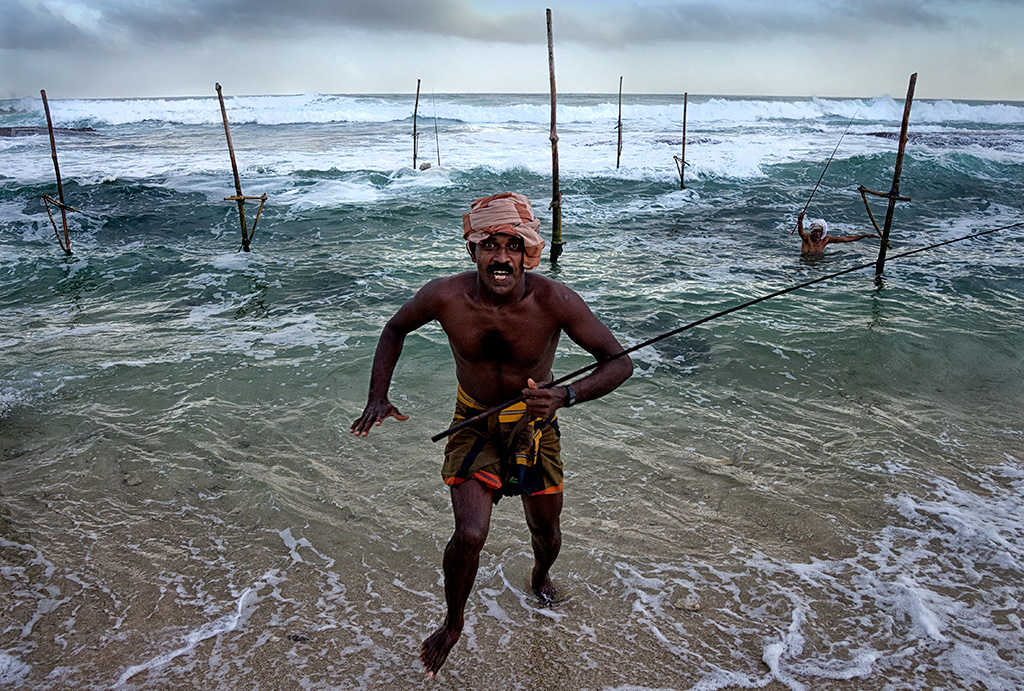Stilt fishing is a tradition that only about 500 families in the southwestern-most Sri Lankan district of Galle practice before the 2004 Boxing Day Tsunami. However, the tsunami changed all these traditions. Kathaluwa and other surrounding areas in the southwestern and western side of Sri Lanka were badly hit by the tidal wave. These areas facing the open sea bear the full impact of the tsunami. More than 36,000 people were killed. Beaches were pushed back, roads and railway lines were washed away.
Today, stilt fishing is only enacted for the tourists and visitors to the area. The fishermen sit on a cross bar called a petta tied to a vertical pole planted into the coral reef. They hold onto the stilt with one hand while fishing with a rod and line with the other. They used to catch spotted herrings and small mackerels, which are stored in a cloth bag tied around their waist. The poles are made of mangrove timber (bakau) of about 3 to 4m long and part of it driven into the sea bed. The fishermen perched on the petta which is about 2m above the sea. They usually fish in the early morning or late evening when the fish come towards the shore.
These pictures were taken on a photosafari trip to Sri Lanka in 2012.






